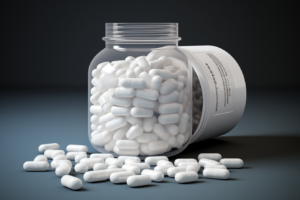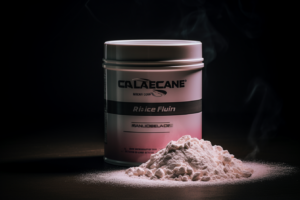Creatine Monohydrate
Creatine monohydrate is one of the most popular forms of creatine available on the market. It is a dietary supplement that is extensively researched and has been shown to increase muscle mass, strength, and athletic performance. It is made up of a creatine molecule and a water molecule, and is the simplest form of creatine. Creatine monohydrate is the most studied form of the supplement and is the most widely used form of creatine supplementation. It is also the most cost-effective form of creatine, making it a popular choice for those looking to increase their muscle creatine content.
Creatine monohydrate is a great supplement for those looking to increase their muscle mass and strength. Studies have found that supplementing with creatine can improve muscle growth, increase strength, and increase muscle creatine content. It is also a great supplement for those looking to increase their power and muscle endurance. There are many different types of creatine available on the market, including creatine ethyl ester, creatine hydrochloride, creatine malate, creatine citrate, creatine magnesium chelate, and micronized creatine monohydrate. Each type of creatine has its own benefits and drawbacks, so it is important to research the different types of creatine before deciding which one is best for you.
Creatine Ethyl Ester
Creatine Ethyl Ester is a creatine supplement that is gaining popularity among athletes and bodybuilders. It is a buffered form of creatine, meaning it is more easily absorbed by the body than regular creatine monohydrate. Studies have found that it is more effective than regular creatine monohydrate in terms of increasing creatine levels in the body. A study published in the Journal of the International Society of Sports Nutrition showed that creatine ethyl ester was more effective than regular creatine monohydrate in increasing muscle strength and muscle mass.

Creatine Ethyl Ester is one of many types of creatine supplements on the market. It is often found in pre-workout supplements, but it is also available as a stand-alone supplement. Creatine Gluconate and Creatine HCL are two other forms of creatine that are available. While there is limited research on the effects of these different forms of creatine, some supplement companies claim that they are more effective than regular creatine monohydrate.
It is best to consume creatine ethyl ester with food, as it can cause stomach upset if taken on an empty stomach. It is also recommended to take one creatine a day, as taking more than that can lead to side effects.
Creatine Hydrochloride
Taking creatine is one of the most popular supplements on the market. It’s a naturally occurring amino acid that helps to increase ATP (adenosine triphosphate) production in the body. Studies have found that using creatine can help to increase strength and muscle mass. Supplement manufacturers have created many forms of creatine, such as powdered creatine monohydrate, to make it easier to take.
Creatine is one of the most studied supplements out there, and we already know that creatine monohydrate is the most effective form of creatine on the market. Compared to other forms of creatine, creatine monohydrate is better than creatine hydrochloride. Many creatine products on the market are actually just creatine monohydrate in a different form. When it comes to creatine, it’s best to stick with creatine monohydrate products, as they are the most effective and have the least amount of side effects. Studies have found that creatine monohydrate supplementation can help to increase strength and muscle mass in the skeletal muscle, like the stomach. Supplements come and go, but when it comes to creatine, it’s best to stick with what we already know works.
Creatine Malate
Creatine malate is a form of creatine monohydrate that has been combined with malic acid. It is believed to be more effective than creatine monohydrate, as the malic acid helps to increase the absorption of the creatine molecule. A study found that the use of creatine malate resulted in a greater amount of creatine being absorbed into the muscle cells than when compared to creatine monohydrate.The effects of creatine malate are similar to those of simply creatine, as it helps to increase muscle tissue and strength. However, compared to creatine monohydrate, it is believed to be less effective. Side effects of creatine malate are not intended to be used as medical advice, and sites like stomach discomfort have been reported. Nevertheless, creatine malate is still a popular form of creatine monohydrate and is used by many athletes and bodybuilders.
Creatine Magnesium Chelate
Creatine Magnesium Chelate is a form of creatine that is gaining popularity among athletes and bodybuilders. It’s one creatine molecule bound to two magnesium ions, making it more stable and better than creatine monohydrate. Compared to other forms of creatine, it’s said to be absorbed more quickly and efficiently by the body.The benefits of Creatine Magnesium Chelate are said to be greater than those of creatine monohydrate. It’s said to be more bioavailable, meaning it can be absorbed more quickly and efficiently by the body. It’s also said to be more stable, meaning it won’t break down as quickly as other forms of creatine. Plus, it’s said to be better at targeting specific muscle sites, so the effects are more localized. The statements made on this site are not intended to diagnose, treat, cure, or prevent any disease.
Buffered Creatine
Buffered Creatine is a great supplement for athletes and bodybuilders alike. It’s a form of creatine that’s been buffered with an alkaline substance, making it easier for the body to absorb and use. Compared to regular creatine, buffered creatine is more effective and has fewer side effects. It’s like creatine on steroids!I’m a big fan of buffered creatine. It’s been a game-changer for me. I’ve noticed a huge difference in my energy levels and muscle growth since I started taking it. Plus, I don’t have to worry about any of the creatinine side effects that can come with regular creatine. It’s definitely worth the extra money.

Types of Creatine
Creatine is a naturally occurring compound found in the body that helps to provide energy to cells. It’s a popular supplement among athletes and bodybuilders, as it can help to increase muscle mass and strength.
There are several types of creatine available, each with its own benefits and drawbacks.Let’s start with the most popular type of creatine, monohydrate. Compared to other forms, monohydrate is the most cost-effective and widely available. It’s also the most studied form of creatine, so there’s plenty of evidence to back up its effectiveness. Monohydrate is great for those looking to increase muscle mass and strength, as it can help to boost performance in the gym.
Creatine ethyl ester is another type of creatine that’s gaining popularity. It’s more expensive than monohydrate, but it’s also more easily absorbed by the body. This means that you can get more bang for your buck, as you don’t need to take as much to get the same results. It’s also been shown to be more effective than monohydrate when it comes to increasing muscle mass and strength.
Supplement Form
A supplement form is a great way to get the most out of your workout. It can help you reach your goals faster and more efficiently compared to creatine. With the right supplement form, you can get the most bang for your buck.I’m always looking for ways to get the most out of my workouts, so I’m always on the lookout for the best supplement form. I’ve tried a few different ones, but nothing compares to the results I’ve seen with this one. It’s like a turbo boost for my workouts, and I’m seeing results faster than ever before. Plus, it’s easy to use and fits into my budget. I’m sold!
Benefits of Creatine
Creatine is a naturally occurring compound found in the body that has been found to have a variety of benefits for athletes and bodybuilders. Compared to other supplements, creatine has been found to be one of the most effective and safe ways to increase muscle mass and strength.For starters, creatine has been found to increase muscle mass and strength more quickly than other supplements. Studies have shown that athletes who take creatine can increase their muscle mass and strength by up to 15% compared to those who don’t take it. Additionally, creatine has been found to improve anaerobic performance, allowing athletes to perform better during short, intense bursts of activity. Furthermore, creatine has been found to reduce fatigue and improve recovery time, allowing athletes to train harder and longer.

On top of that, creatine has been found to be incredibly safe. Compared to other supplements, creatine has been found to have minimal side effects and is generally well tolerated by most people. So, if you’re looking for a safe and effective way to increase muscle mass and strength, creatine is definitely worth considering.
Dosage
When it comes to dosage, it’s important to know what you’re getting yourself into. Compared to creatine, the dosage of whatever you’re taking can vary greatly. That’s why it’s important to read the label and follow the instructions carefully.When it comes to taking the right amount, it’s best to err on the side of caution. Start with a lower dose and work your way up, if needed. That way, you can avoid any potential side effects and get the most out of your supplement. Plus, you can always compare the dosage to creatine to get a better idea of what you should be taking. Bottom line: do your research and take the right amount for your body.
Liquid Creatine vs. Monohydrate Powder
When it comes to creatine, there’s no one-size-fits-all solution. Liquid creatine and monohydrate powder are two popular options, and it’s important to understand the differences between them before making a decision. Compared to monohydrate powder, liquid creatine is more easily absorbed by the body, making it a great choice for those looking for a quick boost of energy. It’s also a great option for those who don’t like the taste of monohydrate powder, as liquid creatine has a much milder flavor.
On the other hand, monohydrate powder is a great choice for those looking for a more sustained energy boost. It’s also a great option for those who are looking to build muscle mass, as it helps to increase muscle strength and size. Plus, it’s much more cost-effective compared to liquid creatine, making it a great choice for those on a budget. Ultimately, it’s up to you to decide which option is best for your needs.
How Much Creatine Should I Take?
When it comes to creatine, it’s important to know how much to take. It’s not a one-size-fits-all kind of thing. Everyone’s body is different, so it’s important to find the right amount for you. Generally speaking, the recommended dosage is between 3-5 grams per day. However, compared to other supplements, creatine is relatively safe and can be taken in higher doses. If you’re looking to get the most out of your creatine, you may want to consider taking up to 10 grams per day.
It’s important to note that taking too much creatine can cause some side effects, such as stomach cramps and diarrhea. So, it’s best to start with the lower end of the recommended dosage and work your way up. That way, you can find the right amount for you without risking any adverse effects. Plus, you can always adjust your dosage as needed. All in all, it’s important to do your research and find the right amount of creatine for you.

Conclusion
Сonclusion, creatine has been compared to athletes in terms of its effects on muscle strength. Studies have shown that creatine supplementation can increase muscle strength in athletes, leading to improved performance in sports. Creatine has been found to be effective in increasing muscle strength in athletes, as well as in non-athletes. Creatine supplementation has been found to be safe and effective for athletes, and it has been suggested that it may be beneficial for athletes to supplement with creatine in order to improve their performance. Creatine supplementation has been found to be beneficial for athletes in terms of increasing muscle strength, and it has been suggested that it may be beneficial for athletes to supplement with creatine in order to improve their performance. Overall, creatine supplementation has been found to be a safe and effective way to increase muscle strength in athletes, and it may be beneficial for athletes to supplement with creatine in order to improve their performance.
FAQ’s:
Q1. What is the difference between different types of creatine supplements?
A1. The difference between different types of creatine supplements is that they vary in terms of the form of creatine they contain, such as monohydrate, ethyl ester, and hydrochloride.
Q2. What are the benefits of taking creatine supplements?
A2. The benefits of taking creatine supplements include increased muscle strength and size, improved exercise performance, and enhanced recovery.
Q3. What is the best type of creatine supplement?
A3. The best type of creatine supplement depends on individual needs and preferences, but monohydrate is the most widely studied and is generally considered to be the most effective.
Q4. Is creatine safe to take?
A4. Yes, creatine is generally considered to be safe when taken in recommended doses.
Q5. How much creatine should I take?
A5. The recommended dose of creatine is typically 3-5 grams per day, although some studies have used up to 20 grams per day.
Q6. How long does it take for creatine to work?
A6. It typically takes about 4-6 weeks for creatine to reach its full effect.
Q7. How does creatine compare to other supplements?
A7. Creatine is one of the most widely studied and effective supplements available, and is often compared to other supplements such as protein and amino acids.



 Creatine And Muscle Energy
Creatine And Muscle Energy
